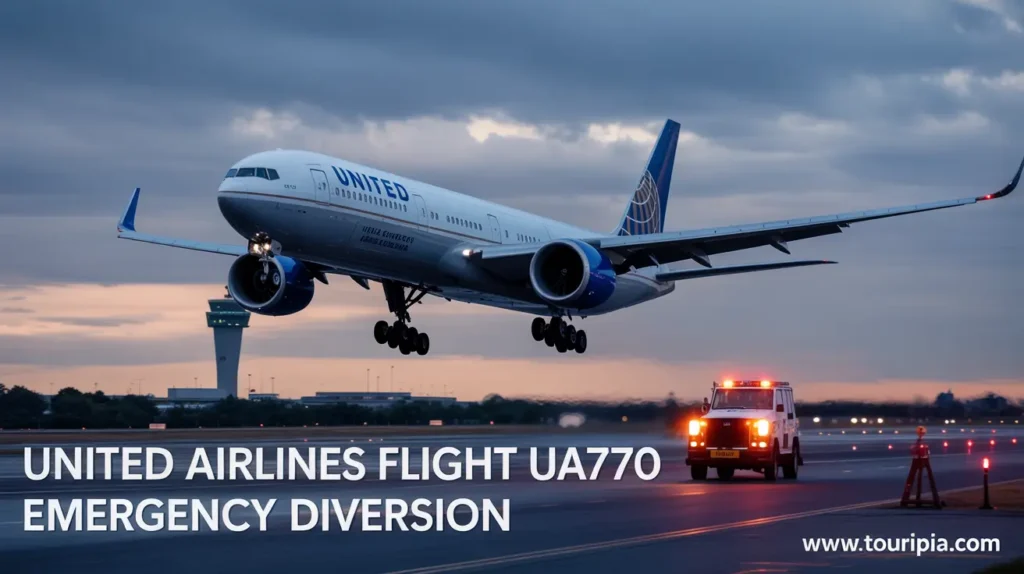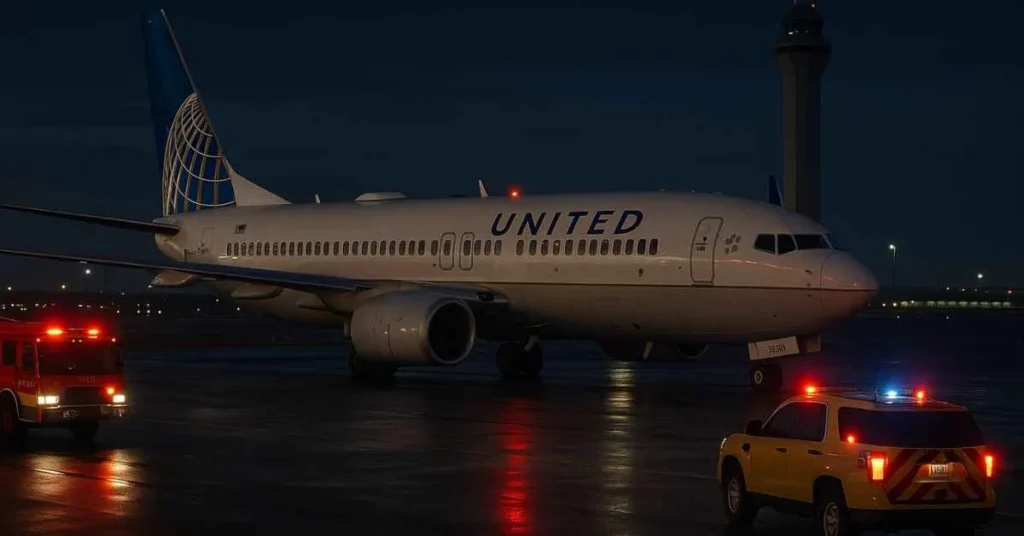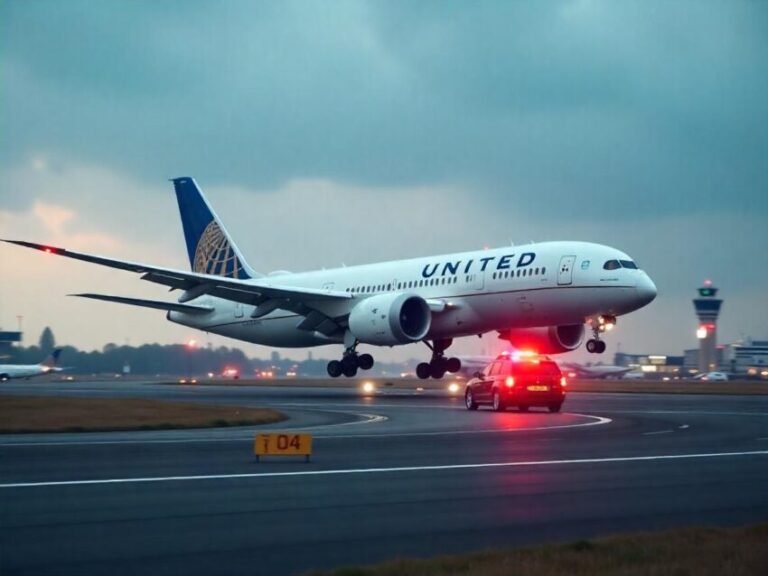On an otherwise routine journey, United Airlines Flight UA770 experienced a sudden and unexpected incident that forced the aircraft to make an emergency diversion. What started as a standard transcontinental flight quickly turned into a tense situation at 30,000 feet, stirring fear among passengers and prompting swift action from the flight crew. With increasing scrutiny on airline safety, incidents like the united airlines flight ua770 emergency diversion bring a host of questions. What exactly happened on United Airlines Flight UA770? How did the crew manage the situation? And what can we learn from this emergency? In this article, we provide a comprehensive breakdown of the incident, including firsthand accounts, aviation protocols, and expert analysis.
The Flight in Question: UA770 Overview
Background of United Airlines Flight UA770
United Airlines Flight UA770 was scheduled to operate a routine route from Denver International Airport (DEN) to Los Angeles International Airport (LAX) on a modern Boeing 737 aircraft. The flight, like many others that operate daily between major U.S. hubs, was expected to last just over two hours. Carrying over 150 passengers and crew, UA770 was a standard commercial operation—until it wasn’t.
The flight took off around 8:30 AM local time, and for the first 45 minutes, everything proceeded smoothly. Passengers had just started to settle in—some scrolling through in-flight entertainment, others sipping on their complimentary beverages. Then, somewhere over the Rocky Mountains, something went terribly wrong, prompting what would later be known as the united airline flight ua770 emergency diversion.
The Moment of Crisis: What Happened Mid-Flight?

Sudden Onset of In-Flight Emergency
Around 30,000 feet in the sky, passengers and crew began to notice signs of an unusual occurrence. It began with a sharp jolt—similar to turbulence, but more violent. The aircraft pitched slightly and then leveled, but within moments, the cabin crew began moving quickly and calmly. A voice from the cockpit followed shortly after, announcing a “precautionary diversion due to an onboard technical issue.”
Panic quickly set in among passengers. Oxygen masks were not deployed, but many reported a sudden drop in cabin pressure, strange noises from the aircraft’s fuselage, and an abnormal smell—described by some as burning plastic or electronics. Several individuals reported seeing crew members rush toward the rear of the aircraft, where the source of the issue appeared to be originating.
This combination of warning signs triggered the united airlines flight ua770 emergency diversion — a swift and necessary action to ensure the safety of all passengers and crew.
The Crew Response: Professionalism Amid Panic
Flight Crew Decision-Making Under Pressure
The successful handling of UA770’s emergency diversion has been widely praised by aviation analysts. The flight crew, led by a seasoned captain with over 15 years of experience, followed standard emergency procedures to the letter.
Once the emergency was identified, the flight deck conducted a series of quick checks using the aircraft’s onboard diagnostic systems. Rather than risk continuing to LAX with an undiagnosed fault, the pilots followed FAA protocol: declare an emergency, descend to a safer altitude, and divert to the nearest suitable airport. This was the core of what became the united airlines flight ua770 emergency diversion.
In the cabin, flight attendants moved swiftly to keep passengers informed and calm. Several passengers later commended the crew’s transparency, noting that the calm tone of the announcements and visible professionalism of the staff helped reduce anxiety.
Communication With Ground Control
Air traffic control (ATC) played a vital role in ensuring the aircraft’s safe landing. According to publicly available ATC recordings, the pilot clearly communicated the issue, received clearance for an expedited descent, and coordinated the landing approach into Salt Lake City with efficiency. Emergency crews were placed on standby, and runways were cleared to accommodate the united airlines flight ua770 emergency diversion.
Passenger Experience: A Terrifying Ride
Firsthand Accounts of Those Onboard
Social media quickly lit up as passengers began sharing their stories. One passenger, Amanda Lopez, tweeted:
“Thought it was turbulence at first. Then the smell, the drop… crew stayed calm, but we all knew something was wrong. I’m just thankful we landed safely.”
Others described scenes of prayer, tears, and tightly gripped armrests. Several families traveling with young children said it was one of the most frightening experiences of their lives. Yet nearly all passengers agreed: the crew’s composed demeanor helped keep the situation from devolving into chaos during the united airlines flight ua770 emergency diversion.
Post-Landing Reactions
Upon landing safely in Salt Lake City, passengers were met with paramedics, fire crews, and customer service representatives from United Airlines. No injuries were reported, but several passengers were evaluated for anxiety-related symptoms. The airline provided accommodations and rerouted passengers to their original destinations later that day.
United Airlines issued an initial statement thanking the crew and passengers, promising a full investigation, and emphasizing its commitment to safety in light of the united airlines flight ua770 emergency diversion.
Aviation Protocol: What Happens During an Emergency Diversion?

FAA Guidelines and Airline Procedures
Emergency diversions, though rare, are carefully choreographed procedures in commercial aviation. Pilots are trained to assess situations within seconds and act decisively. Diversion decisions are based on several factors: the nature of the emergency, distance to alternative airports, weather conditions, fuel levels, and aircraft performance.
In the case of the united airline flight ua770 emergency diversion, the decision to divert was not only appropriate—it was essential. Once a possible electrical fault is suspected, even if it doesn’t impair flight control systems, the risk of escalation (e.g., fire or total power loss) makes immediate diversion the safest choice.
Coordination With Airline Operations
Behind the scenes, airline operations teams spring into action during such incidents. Maintenance teams are notified to prepare for inspection, public relations teams draft preliminary statements, and logistics teams arrange passenger services such as food, hotel accommodations, and rebooking. The united airlines flight ua770 emergency diversion was no exception, with a full corporate response activated within minutes.
Lessons from UA770: Safety, Preparedness, and Transparency
Importance of Routine Maintenance and Monitoring
Though it will take weeks or even months before the final investigation is complete, early signs suggest that a non-critical system failed in a way that was unexpected. This raises important questions about predictive maintenance systems. Could onboard sensors have detected the issue earlier? Was there a lapse in inspection?
United Airlines is one of the largest and most regulated carriers in the world, with rigorous maintenance protocols. Still, the united airlines flight ua770 emergency diversion may prompt the FAA and NTSB to revisit certain inspection schedules or introduce new safety advisories for similar aircraft.
Mental Health and Crisis Management in Aviation
One often overlooked aspect of aviation emergencies is the psychological toll on passengers and crew. The trauma of being in a life-threatening situation—even one that ends safely—can have lasting effects. Airlines are beginning to offer post-incident counseling and mental health support, and the united airline’s flight ua770 emergency diversion might serve as a case study for future improvements in this area.
The Broader Picture: How Safe Is Air Travel Today?
Contextualizing the Risk
Incidents like the united airlines flight ua770 emergency diversion make headlines because they are rare. According to IATA, commercial aviation remains the safest mode of transport. In 2024, the accident rate was just 0.81 per million flights. Emergency diversions like this are part of the reason why fatalities are so low—they are evidence that systems are working as designed.
In many ways, the successful handling of this incident reinforces public confidence. The crew was trained. The systems responded. The passengers were safe.
What Comes Next?
The FAA will likely open a formal inquiry, including a full inspection of the aircraft involved in the united airlines flight ua770 emergency diversion. If any patterns are discovered, airworthiness directives may follow, requiring all airlines using similar aircraft to implement fixes or changes. Meanwhile, United Airlines has promised full cooperation with regulators and a review of internal procedures.
Conclusion
Panic at 30,000 Feet: United Airlines Flight UA770 Emergency Diversion Explained is more than just a dramatic headline—it’s a reflection of how far modern aviation has come. While the experience was harrowing for those on board, it also highlighted the extraordinary professionalism of the flight crew and the robustness of aviation safety protocols.
As the investigation into the united airlines flight ua770 emergency diversion unfolds, we may learn more technical details, but one truth remains evident: quick thinking, rigorous training, and a culture of safety turned what could have been a disaster into a well-managed emergency. For passengers, it was a terrifying ordeal. For the aviation industry, it was a successful test of preparedness.
Incidents like this remind us that while we often take flying for granted, every safe landing is a triumph of engineering, human skill, and coordination. And in the case of UA770, those elements came together flawlessly—even at 30,000 feet.
Read more: TEK-102: Foundations of the Digital Future


